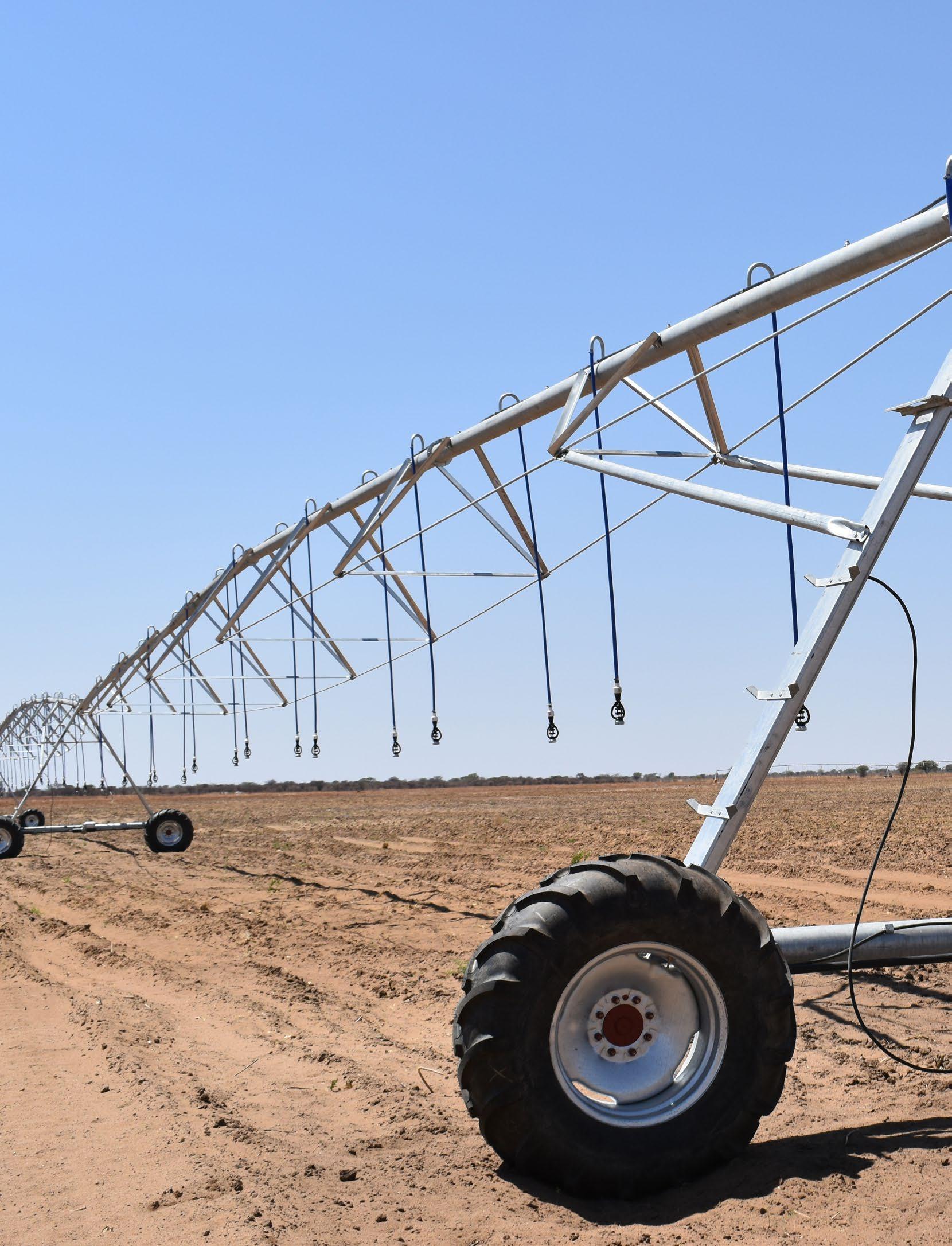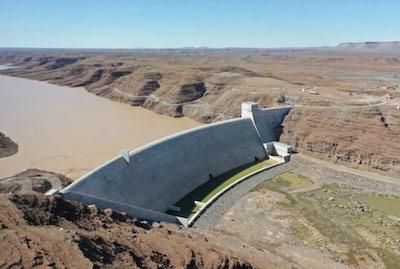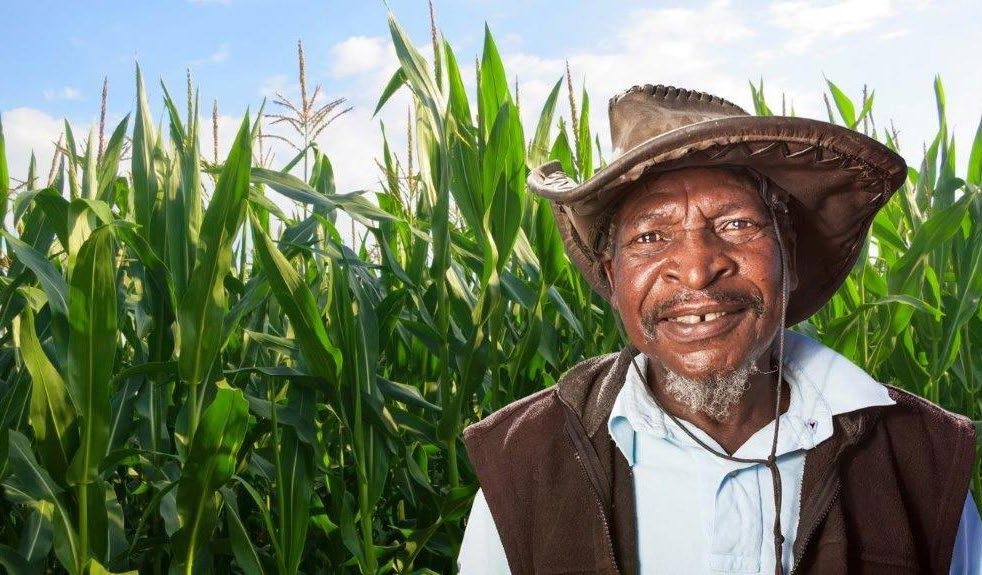
5 minute read
Great potential for Namibia’s grain farmers
from ProAgri BNZ 07
by ProAgri

by Jaco Cilliers
Advertisement
Namibia’s grain stock is under pressure. This is due to various factors that have plagued the Namibian agricultural community in recent years. Under perfect conditions, the country cannot produce enough grain to meet its consumption requirements. In 2018 the Minister of Agriculture, Alpheus !Naruseb, reported that the country had to import 50% of its maize and 80% of its wheat due to the domestic shortfall. In order for Namibia to decrease their imports, the Minister said that they had to rely on investors to develop more irrigated farmland. “It remains our collective responsibility as a government, private entities and individuals alike to mobilise the required investment in order to transform approximately 15 000 hectares into irrigation-based production between now and the year 2030. Doing so would enable us to reach our target of putting 27 000 hectares under irrigation as per our Vision 2030 target.” (Source: The Namibian Sun, !Naruseb cracks whip on grain imports, 12 March 2018.) In 2020, Namibia needs to import 180 000 tonnes of maize and 95 000 tonnes of wheat in order to feed the population. This is according to the statistics of the Namibian Agronomic Board. As far as their vision of having 27 000 hectares under irrigation by 2030, it does not seem that they are making much progress. For the years 2017/2018 they only managed to plant 4 405 hectares of irrigated maize with the Kavango and Omusati regions leading with 2 395 hectares. There was only 1 568 hectares of wheat planted in the whole of Namibia, including dryland and irrigated lands for the same period. The solution seems simple. Namibia has to produce more grain domestically to decrease the deficit. But it is easier said than done. Firstly, Namibia is an arid country, one of the driest in Sub-Sahara Africa. The average rainfall measured in Windhoek is only 370 mm per year. There are areas that receive more rain, such as the North-Western corner of the country which has an average rainfall of 500 mm per year. Due to the shortage of rain, the Namibian government has set up irrigation schemes over the years. There are irrigation schemes in Kavango and Omusati, in Hardap and surrounding areas, as well as in the Central and Eastern regions. To make matters worse, the country has been gripped in a drought for the past seven years. In May 2019 the President, Hage Geingob, declared the whole country a disaster area due to the persisting drought. This drought increased the need for grain imports as the Namibian farmers could not produce enough grain to meet the demand. The drought caused dams to dry up, which meant that irrigation farmers could not irrigate their crops. The long-term solution appears to be that Namibia needs to build more dams so that more irrigation projects can be developed. The Namibian government has made efforts to secure water sources. The recently completed Neckartal Dam near Keetmanshoop will put another 5 000 hectares of agricultural land under irrigation. Another solution to the water shortages is desalination. In 2019 the Namibian government and NamWater commissioned an environmental impact assessment for a planned desalination plant. The existing desalination plant near Swakopmund was built by the French company, Areva, to supply water to its own uranium mine. Areva approached the Namibian government with a proposal to sell the plant to them in 2016. Apart from dams and desalinated water, there are also underground aquifers that can be tapped into. In 2012 five billion cubic meters of underground water was discovered by German experts in the northern regions close to the Angolan border. This water is reportedly located at a depth of 300 metres. In other words, there is great potential for Namibian agriculture. Investment in irrigation will enable the Namibian farmers to tap into the existing resources and produce more wheat, maize and other essential crops. The problem is that these projects will provide only long-term solutions to the Namibian food shortage. The only short-term solution seems to keep on importing maize and wheat from neighbouring South Africa. To provide relief for the importers of essential grain, the governments have agreed to reduce the import tax on grain and animal feeds. Under normal circumstances a farmer who wanted to import animal or grain from South Africa had to wait for several weeks before receiving his products. With the recent restrictions imposed on the borders due to COVID-19, the waiting period is likely to increase. This means that importers of grain and feed will need to plan ahead in order to maintain sufficient stock. Namibia has many problems, but just as many solutions. The effort that the government and private sector will put in to ensure that there is enough investment in the development of water sources will ultimately make the difference between the success or failure of Namibia’s grain producers.

The recently completed Neckartal Dam near Keetmanshoop will enable farmers to irrigate 5 000 hectares and significantly increase domestic grain production. Photo: https:// www.waterpowermagazine.com/


Omnia Cash & Carry
Fertilizer Stock Feed Seed Chemicals

Find your nearest Omnia shop:
36
Bindura Chegutu Chinhoyi Chiredzi Banket Gweru Paisley Harare Dr Boka Auction Floors Mt Hampden Mbare Robson Manyika / 4th Street Bulawayo Road Kadoma Marondera Mvurwi Rusape
Bindura Chegutu Chinhoyi Chiredzi Banket Gweru Harare Harare Harare Harare Harare Harare Harare Kadoma Marondera Mvurwi Rusape +263 772 186 179 +263 772 197 763 +263 782 711 633 +263 782 707 276 +263 782 716 389 +263 772 296 701 +263 772 286 112 +263 772 194 749 +263 778 704 627 +263 772 138 857 +263 782 713 192 +263 782 711 632 +263 782 703 039 +263 772 225 239 +263 775 127 995 +263 772 186 177 +263 778 769 056
ProAgri BNZ 07 NRZ Premises, Robert Mugabe Way, Bindura GMB Premises 248-250 Warwick Road, Chegutu Shop no. 1 Stand no 6 (Old Barclays Bank), Chinhoyi Std 76B Knobthorn Road, Chiredzi 1 91km peg Hre/Chirundu Highway 69B 6th Street, Gweru 8 Paisley Road, Workington, Harare, Zimbabwe 515 of Std 454 Vainona, T/Ship, Vainona 13km peg, Simon Mazorode Rd 17.5km peg Harare/Chinhoyi Highway Shop no. 2 Std 7743A of Std 29629 Arcadia, Mbare Complex Satcoy House, Cnr Robson Manyika & 4th Street, Harare Chirinda Farm, 1 Bulawayo Road, Tynwald, Harare 34 Robert Mugabe Way, Kadoma No. 7 Birmingham Road, Industrial Sites, Marondera Plot no 1 of Umvukwes Flats, Centenary Road, Mvurwi Std no. 1 Magamba Way, Industrial Sites








